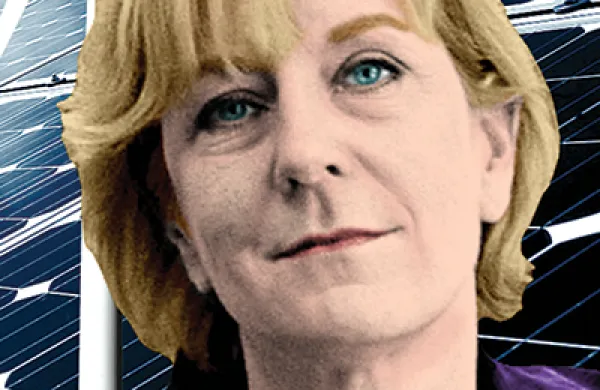In April I attended the Skoll World Forum on Social Entrepreneurship, a three-day conference held annually at Oxford University and organized by the Skoll Foundation, the Palo Alto, California–based $500 million foundation founded in 1999 by Jeff Skoll, former president of online auction giant eBay. The Skoll Foundation mission is to “drive large-scale change by investing in, connecting and celebrating social entrepreneurs and other innovators dedicated to solving the world’s problems.” Skoll honors social entrepreneurs — people using business know-how to change the world and whose work it supports — at the Skoll World Forum, now in its 12th year.
If the idea that entrepreneurialism, often blended with technology, can alleviate the ills of the world — and that Skoll knows just the people who can do it — sounds arrogant and idealistic, then, welcome to the world of social venture capital. Many in the traditional investment world, even some in the so-called impact investment community, tend to be dismissive of social venture capital as not sufficiently grounded in finance and not something that is applicable outside the context of a small band of wealthy and philanthropic investors.
Nonetheless, whether it was the jet lag, the fact that I was commuting to Oxford from my parents’ home in Bath or that the sun was shining during the event, I decided to check my cynicism and open myself to new ways of thinking.
The forum draws a crowd of genuinely accomplished and impressive individuals. Speakers at this year’s event included archbishop emeritus Desmond Tutu and former president of Ireland Mary Robinson, whose foundation is doing good work on climate justice.
Most attendees appeared passionate in their commitment to solving important problems, with hard work and determination, as well as PowerPoints and business models. They are also concerned with areas of the world, and parts of the population, that mainstream investors often ignore.
On the morning of the second day, I sat in on a seminar titled “Expect the Unexpected: Building in Plan B.” (Conference sessions have names like that. A concurrent session was “Beyond Better: How Do We Know We’re Changing the Status Quo?”) Speakers included journalist and author David Bornstein and documentary filmmaker Orlando von Einsiedel.
Bornstein is the co-founder of Solutions Journalism Network, a not-for-profit organization that advocates for a form of journalism that features problem-solving around social issues. Bornstein argued that positive stories often get greater pickup, and are better read, than negative ones. Another story about failing inner-city schools, for example, does not receive much reaction from readers. A story about kids in those schools who are succeeding despite hardships is better received. For a real-life example, consider the New York Times’s “Invisible Child” series, published in December 2013. The five-part story, on Dasani, an 11-year-old homeless girl in Brooklyn who was managing to cobble together a life, and some slim shards of hope, against tremendous hardships, caused a sensation. By describing a girl with spirit and heart, the author found a compelling way to discuss the challenges of homelessness that readers would find difficult to ignore.
In 2012 von Einsiedel traveled to Virunga National Park in the Democratic Republic of Congo planning to film a documentary on progress the authorities had made developing the region. Shortly after he arrived, rebels attacked, and Virunga became a battleground in a civil war. The resulting documentary, Virunga, released through Netflix in late 2014, accuses the London-based oil company SOCO International of illegally seeking access to the World Heritage Site to explore for oil. Von Einsiedel said he had been showing the film to institutional investors, encouraging them to divest from SOCO. (The company has denied allegations made in the documentary.)
I may be an amateur when it comes to social venture capital, but I do know a fair amount about divestment and how investors approach the issue. Divestment is a challenge, whether it’s the current push for institutions to sell shares of fossil fuel producers or the earlier efforts to persuade pension plans and other funds not to invest in companies doing business in the Sudan.
Not only do institutions resist calls to divest, but also their response to human rights abuses is often to ignore them. (There are exceptions to this, such as initiatives from the Norwegian sovereign wealth fund.) It is not true, as some activists claim, that all institutional investors are heartless capitalists who don’t care about the poor and exploited. But from an institutional investor perspective, caring is not in the mandate, barring any impact on share price; in fact, divesting might be construed as a violation of fiduciary duty. If you told me that a company I’m investing in does awful things in the Democratic Republic of Congo, I might feel terrible, but since I’d be impotent to act, my most likely response would be to turn away — or change the channel.
If readers respond more positively to stories about social justice that give them hope, might not the same hold true for investors? It’s doubtful, I know, that most institutional investors could find a reason to invest in, say, conservation in the Democratic Republic of Congo. But the concept is not such a far stretch. The whole point of impact investing is to find investment opportunities that have both financial gain and social or environmental benefits. And the ideas driving the impact trend are not limited to high-net-worth individuals and foundations.
The New York–based $4.77 trillion asset manager BlackRock is in the process of developing an impact investing platform that would include public market portfolios. The firm is applying quantitative screenings to public securities, looking for those that have the most positive impact, and building strategies it believes will outperform. Last week I spoke to one of the leaders of that project, a quant who had been skeptical of sustainable investing. He was excited about the idea of investing in companies doing projects such as researching and developing drugs to combat dysentery, a huge health problem in many developing countries, or producing pesticides that are less harmful to the environment. This is not impact investing as it is commonly defined, but it does demonstrate the power of capital to achieve positive change.
Investors are starting to view so-called nonfinancial factors differently, even in the U.S., where historically they have resisted considering, say, social responsibility as part of their fiduciary duty. The Intentional Endowments Network is a group of like-minded endowments that believe in a more thoughtful approach to investing, which respects and reflects the mission and values of the institution without sacrificing returns. You can also argue that the subprime mortgage crisis could have been prevented, or at least significantly reduced, if investors had thought seriously about where their capital was going and the social and economic implications of their actions.
The message matters. For more capital to flow toward social and environmental causes, activists, nongovernmental organizations and other stakeholders need to find ways to get institutional investors to say yes and not no. They are going to be far more successful at doing that if the nature of the message, and the nature of the request, is a positive, not a negative, one. Given the chance to feel good about themselves, and their actions, more investors will step up.
Follow Imogen Rose Smith on Twitter at @imogennyc.






